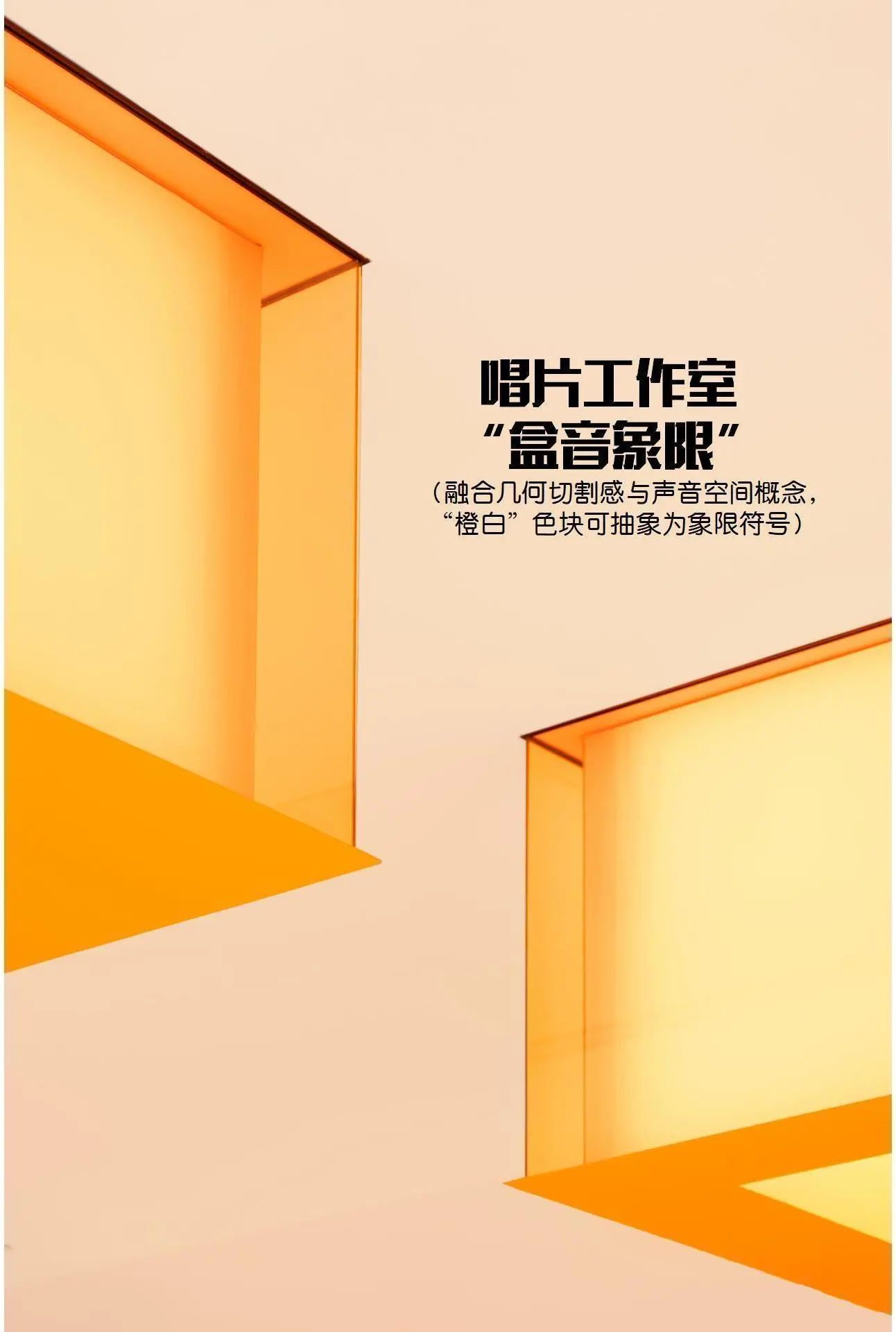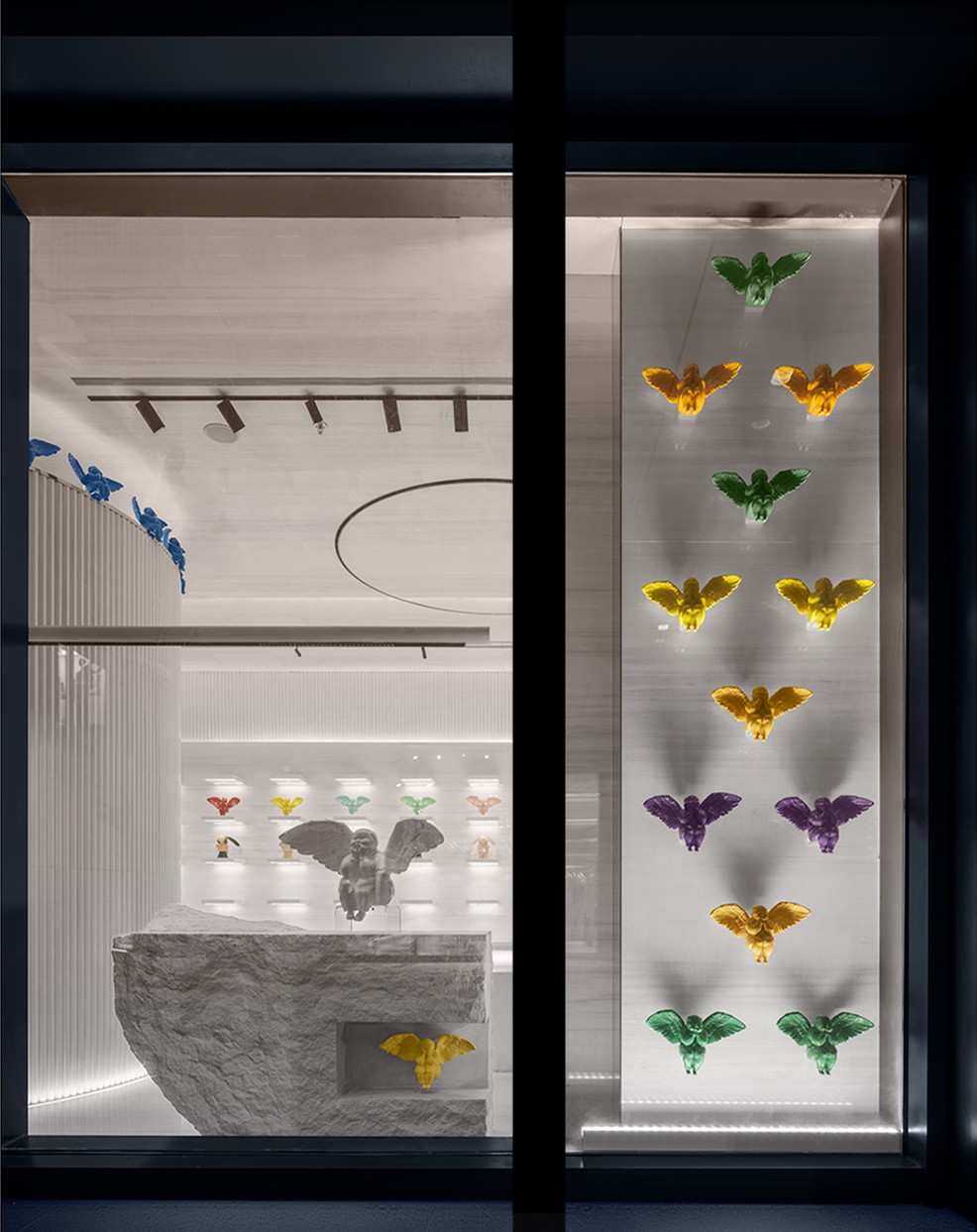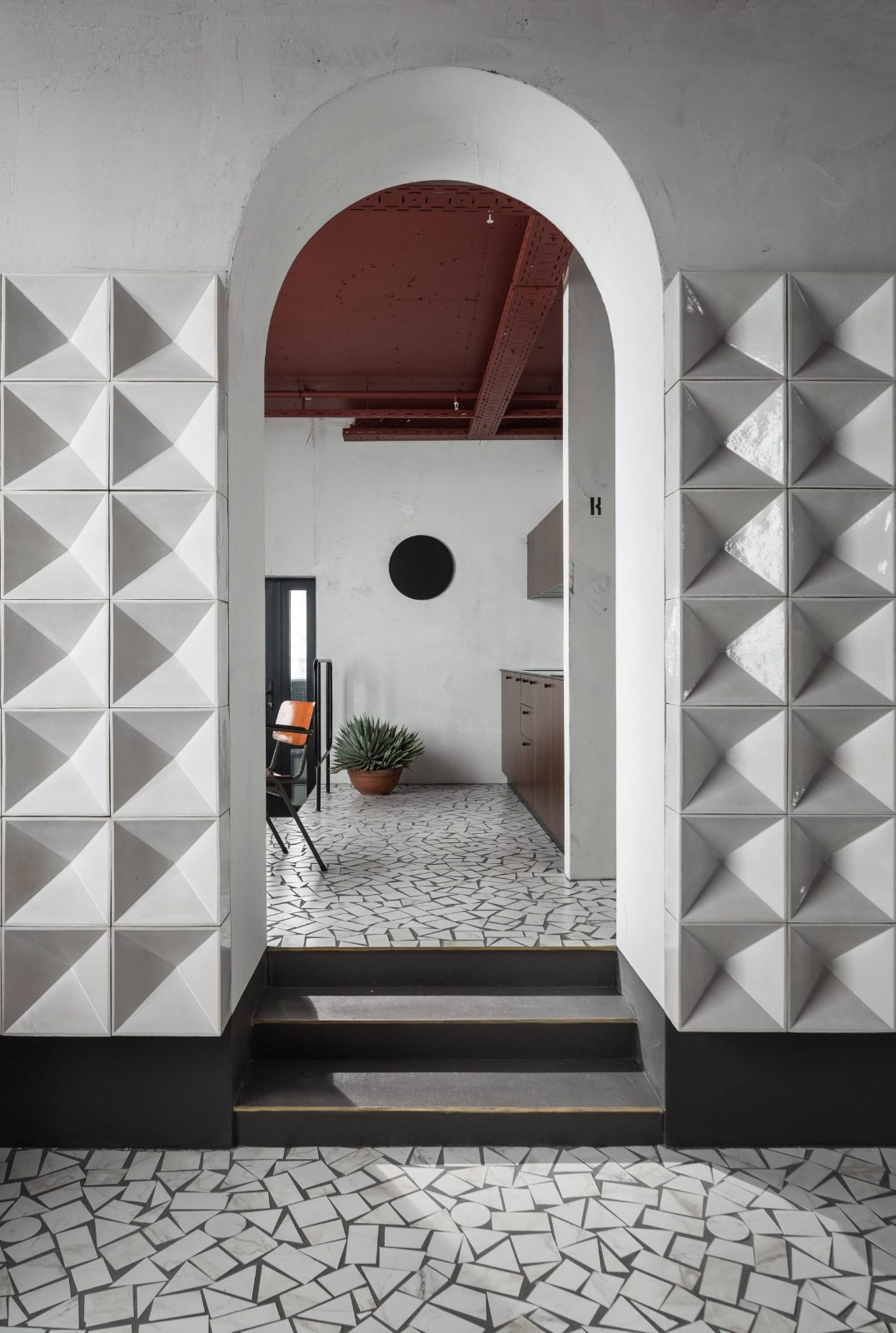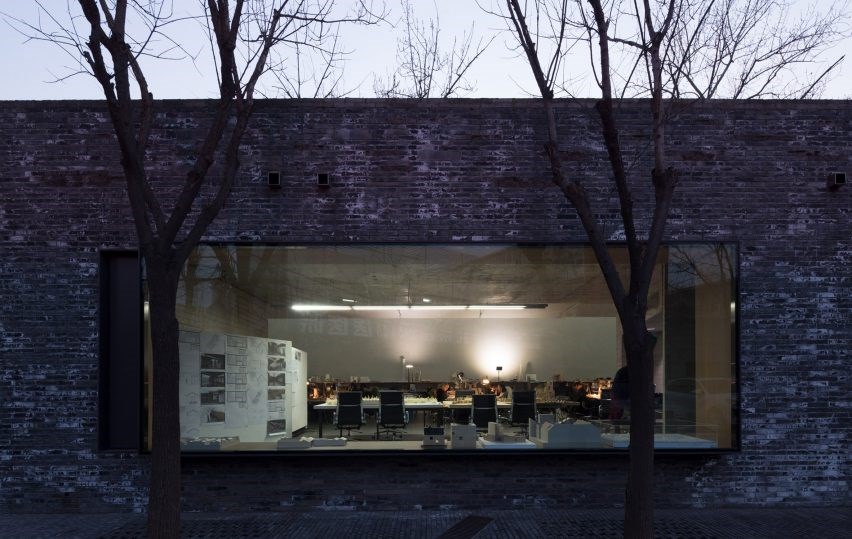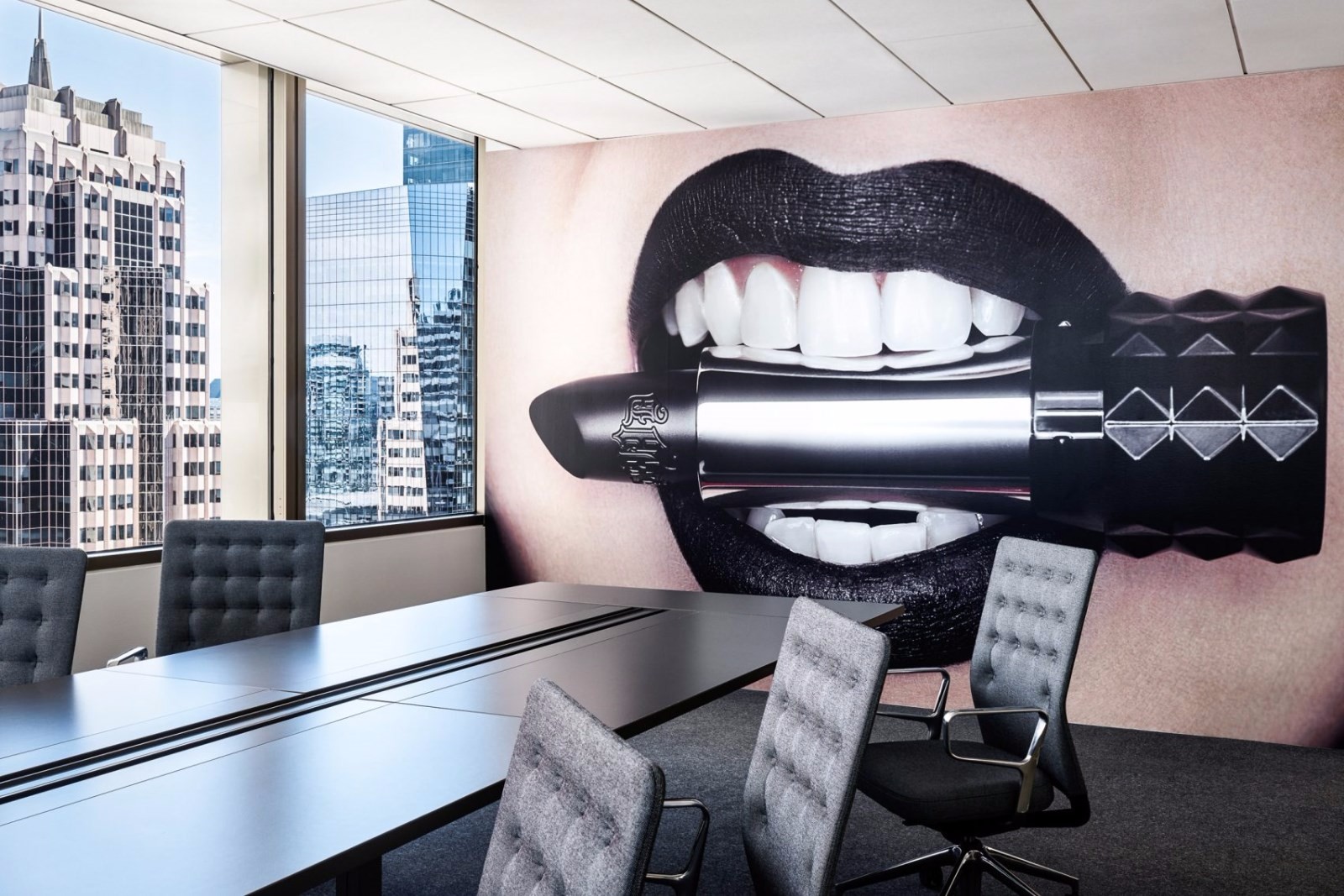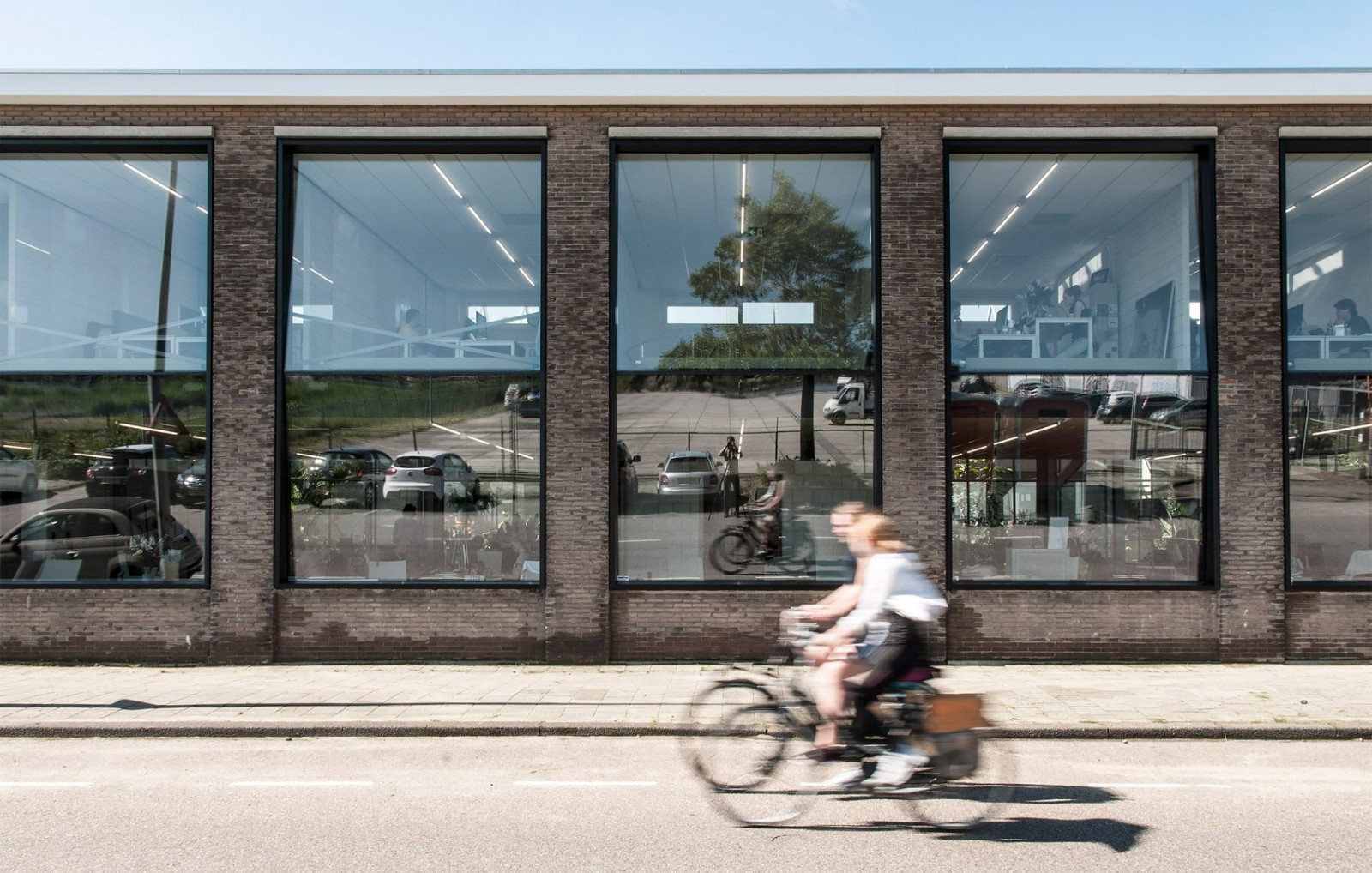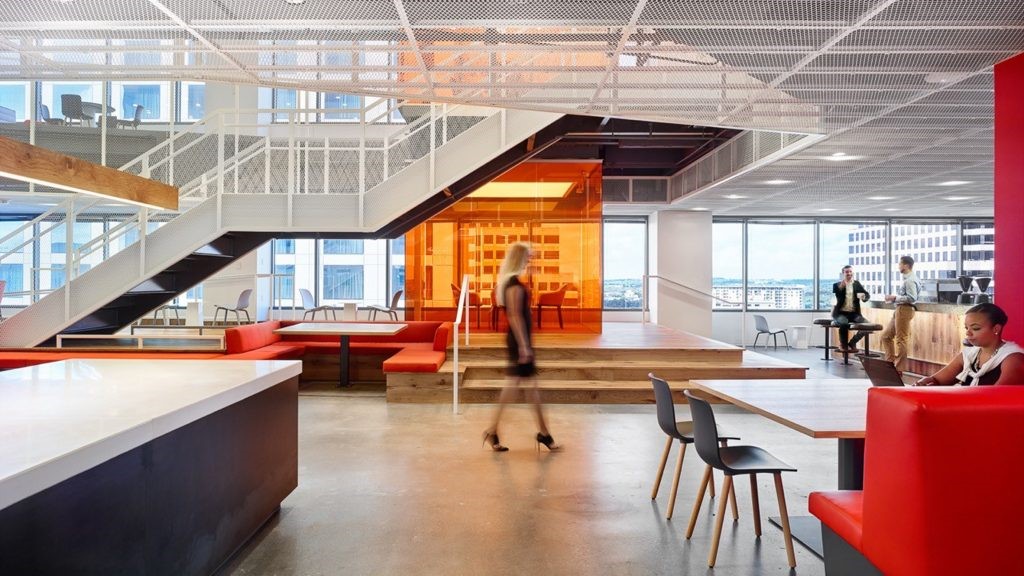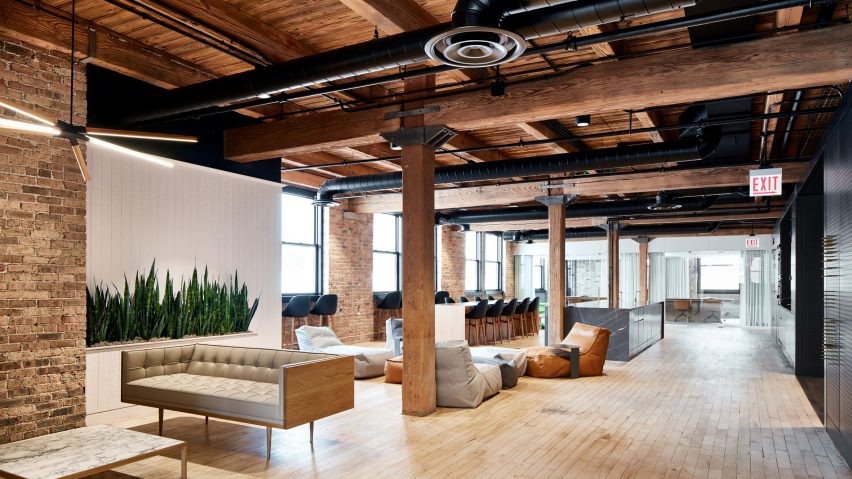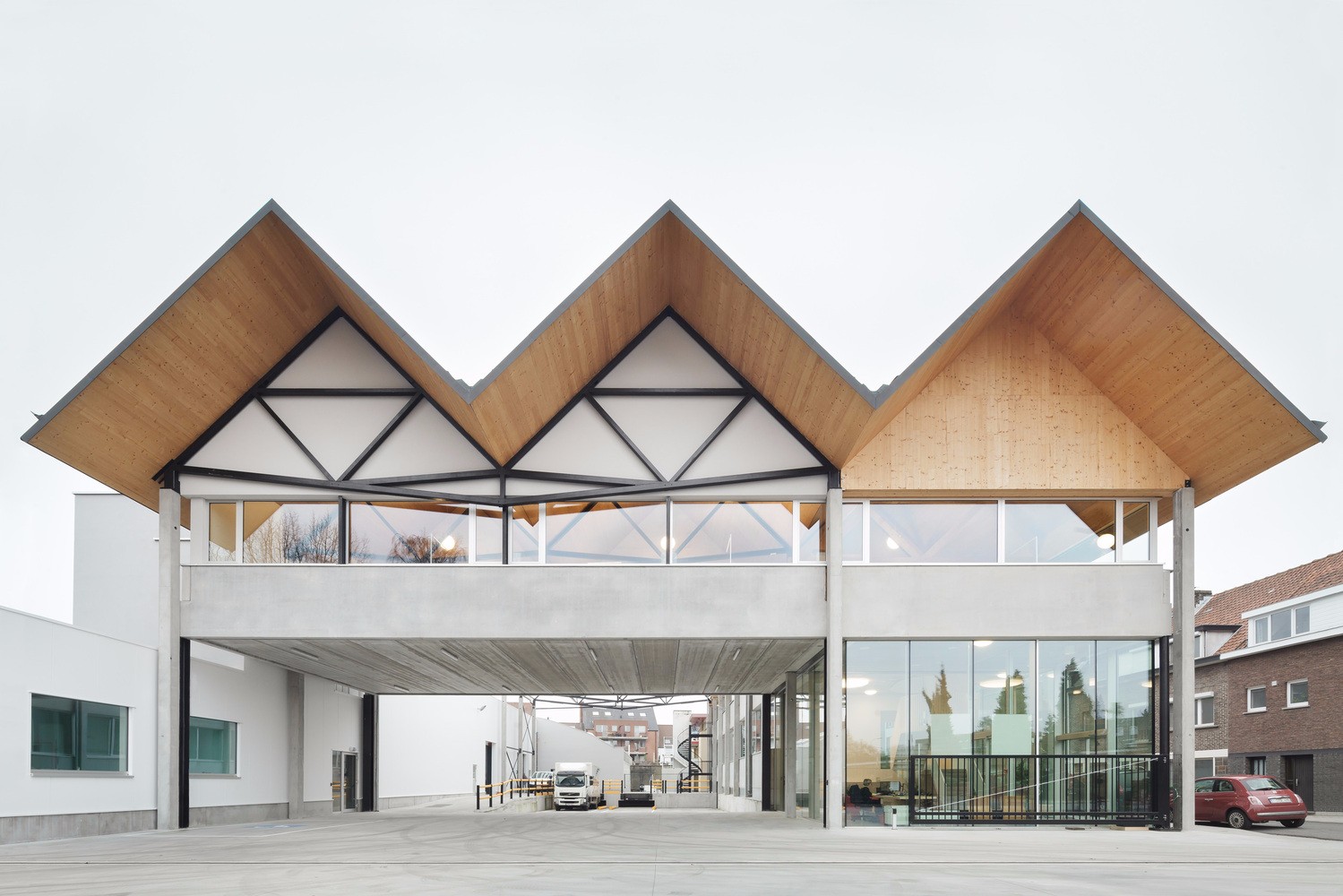崔树新作丨谁最中国 无形的东方之态 首
2023-10-21 11:25




「谁最中国」的这处空间坐落于北京的百子湾园区内,作为一家致力于“中国文化,当代表达”的触摸和探索的文化艺术类媒体品牌,这处空间宛若他们于物质世界的一处镜像。1000平方米的原场地空间,被一分为二,600平方用于作谁最中国团队的办公空间,另外400平方用于构建一个叫做「谁园」的文化空间。如若分别从两个不同的入口进入其中,多半会以为这是两个风格迥异的独立空间。
The Shui Zui Zhong Guo space is situated in Beijing Baiziwan. As a cultural and artistic media brand dedicated to the exploration of Chinese culture and contemporary expression, this space is akin to a reflection of their endeavors in the material world. The original 1000-square-meter space is divided into two parts: 600 square meters used as the office space for the Shui Zui Zhong Guo team, and another 400 square meters dedicated to creating a cultural space known as Shui Yuan. If one were to enter through two separate entrances, they might think these two distinct spaces are two enterprises














两个空间有彼此完整独立的动线但以通道相连,犹如一个古代院落的前庭与后院。「谁园」作为「谁最中国」的美学空间,没有像通常艺术画廊那样做纯白色调性的处理,而是通过剥离原本墙面的抹灰,让空间回到最原始的样子,6米挑高的空间中,仅克制的留下几处浑圆的灰色立柱顶天立地,在人的尺度之上创造出的空旷与留白是空间精神性的物质基础,60多年前的红砖从功能主义的立面变身成为时代舞台上一面新的幕布。
These two spaces have independent pathways but are connected through a corridor, resembling the front and backyard of an authentic Chinese courtyard. Shui Yuan serves as the aesthetic space for Shui Zui Zhong Guo. Instead of the typical all-white tone seen in art galleries, it returns the space to its most primitive state by stripping the original wall plaster. Within the 6 meters high space, only a few rounded gray columns are left standing, creating a sense of openness and blankness that forms the material basis of the spiritual nature of the space. The red bricks from over 60 years ago have transformed from a functionalist facade into a new curtain on the stage of the times.


















「谁园」空间完成后,已经如预想的一般成为文化、艺术、设计轮番登场的舞台,家具、器具、首饰、花道、茶艺的东方美在这里接连呈现。一年四时,阳光、细雨、微风、飘雪相继而来,在这场设计师与时间的合谋中,场域中最原始、最高级、最神性的状态被逐渐磨砺出来。所谓“国际化侘寂风”不仅只是风格的表象,更是一场内在精神上的返场。
After the completion of Shui Yuan, it has in fact evolved into a venue where culture, art, and design each have a chance to shine, and where the Easts beauty is showcased in turn via furniture, kitchenware, jewelry, flower arrangements, and tea art. The most primitive, sophisticated, and heavenly states in the area have been steadily refined via the partnership of designers and time as the four seasons have unfolded with sunlight, mild rain, pleasant breezes, and falling snow. The so-called International Wabi-Sabi style represents a return to ones inner spirituality rather than only being a fashion trend.
























如果说「谁园」是用现代包豪斯的厂房空间重新表达东方院落的精神性,那在办公部分,则是用现代设计手法对东方意向进行更具象的空间转译,两者在同一建筑内的表达构成有趣的互文关系。
If Shui Yuan reinterprets the Eastern courtyards spiritual essence in contemporary manufacturing spaces designed in the Bauhaus style, then in the office portion contemporary design methodologies are applied to more explicitly convey the Eastern aims and create an intriguing intertextual link.


















整体上利用体块之间的穿插关系,形成如中式园林一般的曲径通幽、移步换景般的空间格局。原本结构留下的12根钢构柱子巧妙的消隐在设计师精心规划的功能分区之下。
To create a spatial plan resembling a traditional Chinese garden with meandering paths and ever-changing perspectives, the overall design makes use of the interaction between volumes. Under the thoughtfully designed functional zones lie the 12 steel columns that were first abandoned.












半高的矮墙围合而成为的办公区,为员工带来了心理上的私密性,避免经过人的视觉稍扰,也在空间中创造了高低错落的意趣体验。大面积的镜子与玻璃隔断在方寸之地通过或虚或实的体验,创造出无限的开阔之感。
To create a spatial plan resembling a traditional Chinese garden with meandering paths and ever-changing perspectives, the overall design makes use of the interaction between volumes. Under the thoughtfully designed functional zones lie the 12 steel columns that were first abandoned.














入口照壁之上的开出“窥”与探出“龛”在一送一收之间,打破了原本的严肃之感。此处的“龛”是设计师不经意之间流露的趣味,等待着被点睛的一刻。办公空间的灯光,也是氛围转换的开关。当白天伏案的人们散去,故宫橙的灯光会亮起,照在青砖灰的地面,氤氲出了一份独属于东方的阴翳美学。
The initial seriousness is broken by the peek and niche between transmitting and receiving above the entry screen wall. The design’s fun unintentionally disclosed niche is ready to be recognized. The switch for altering the ambiance in the workplace area is also by the lighting. The Forbidden Citys orange lights shine on the gray brick floor as office workers leave during the day, giving the area a distinctive Eastern look and shadows.










两个空间就像一体两面的双生之花,一面是「谁最中国」作为媒体与内容创作者十年如一日对中国文化当代表达的持续探索,以及由此沉淀来的丰盛的思考,另一面则是「谁最中国」渴望不再单孑独立,于是造了这处「谁园」作为舞台,令群贤毕至,向更广义的“大家”融合。
These two locations resemble a pair of back-to-back twin blooms. On one side is Shui Zui Zhong Guo, a media and content developer who has spent a decade researching how Chinese culture is expressed today and the ensuing profound pondering. On the other hand, Shui Zui Zhong Guo wanted to stop being alone, so they built Shui Yuan as a stage and invited numerous artists to perform there and engage with a larger public.










如「谁在中国」的主理人海丰所言,“……设计最终的目的不是建筑、不是空间,而是人在空间、在建筑中的‘状态’,是人在空间、在建筑中的无意识,是在无意识状态下的精神愉悦……
The ultimate goal of design is not architecture or space, but rather thestate of people in space and architecture, the unconsciousness of people in space and architecture, and the spiritual pleasure in unconsciousness, as stated by Haifeng, the host of Shui Zui Zhong Guo.










这是一场对真实,对真我的追寻。“这里不是对他多年来探寻的总结,但确实独特的一段篇章——一处不见“有形的东方之物”,但有“无形的东方之态”的理想之所
This is a quest for the truth and ones authentic self. This chapter is unique and represents the perfect location where invisible oriental things instead of tangible oriental things exist, and It is not a summation of his years of investigation.


























